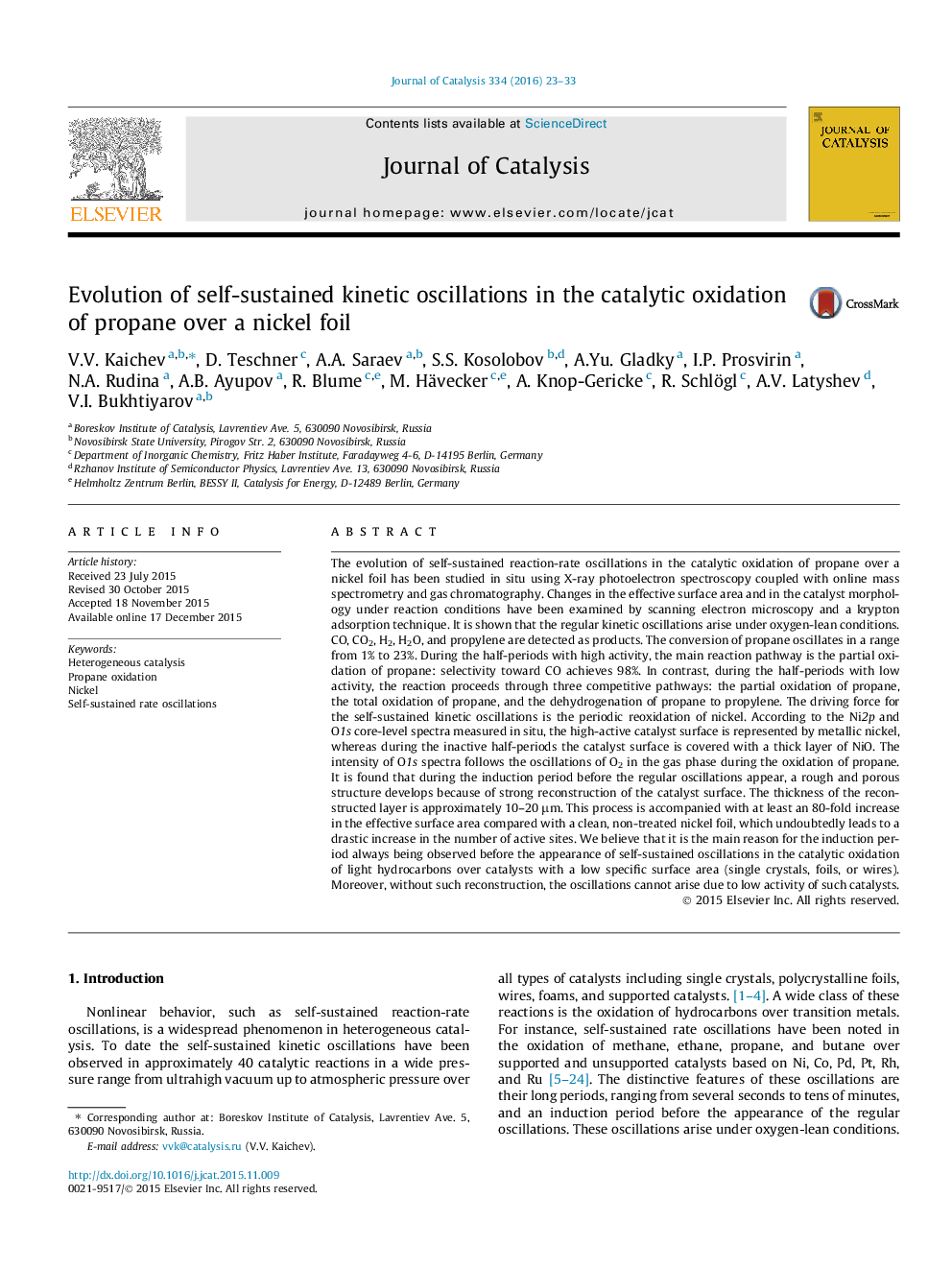| کد مقاله | کد نشریه | سال انتشار | مقاله انگلیسی | نسخه تمام متن |
|---|---|---|---|---|
| 60677 | 47542 | 2016 | 11 صفحه PDF | دانلود رایگان |
• The rate of propane oxidation over Ni oscillates under oxygen-lean conditions.
• The driving mechanism for the self-sustained oscillations is reoxidation of Ni.
• The oscillations are preceded by strong reconstruction of the catalyst surface.
• The induction period before oscillations is due to an increase in the surface area.
The evolution of self-sustained reaction-rate oscillations in the catalytic oxidation of propane over a nickel foil has been studied in situ using X-ray photoelectron spectroscopy coupled with online mass spectrometry and gas chromatography. Changes in the effective surface area and in the catalyst morphology under reaction conditions have been examined by scanning electron microscopy and a krypton adsorption technique. It is shown that the regular kinetic oscillations arise under oxygen-lean conditions. CO, CO2, H2, H2O, and propylene are detected as products. The conversion of propane oscillates in a range from 1% to 23%. During the half-periods with high activity, the main reaction pathway is the partial oxidation of propane: selectivity toward CO achieves 98%. In contrast, during the half-periods with low activity, the reaction proceeds through three competitive pathways: the partial oxidation of propane, the total oxidation of propane, and the dehydrogenation of propane to propylene. The driving force for the self-sustained kinetic oscillations is the periodic reoxidation of nickel. According to the Ni2p and O1s core-level spectra measured in situ, the high-active catalyst surface is represented by metallic nickel, whereas during the inactive half-periods the catalyst surface is covered with a thick layer of NiO. The intensity of O1s spectra follows the oscillations of O2 in the gas phase during the oxidation of propane. It is found that during the induction period before the regular oscillations appear, a rough and porous structure develops because of strong reconstruction of the catalyst surface. The thickness of the reconstructed layer is approximately 10–20 μm. This process is accompanied with at least an 80-fold increase in the effective surface area compared with a clean, non-treated nickel foil, which undoubtedly leads to a drastic increase in the number of active sites. We believe that it is the main reason for the induction period always being observed before the appearance of self-sustained oscillations in the catalytic oxidation of light hydrocarbons over catalysts with a low specific surface area (single crystals, foils, or wires). Moreover, without such reconstruction, the oscillations cannot arise due to low activity of such catalysts.
Figure optionsDownload high-quality image (67 K)Download as PowerPoint slide
Journal: Journal of Catalysis - Volume 334, February 2016, Pages 23–33
